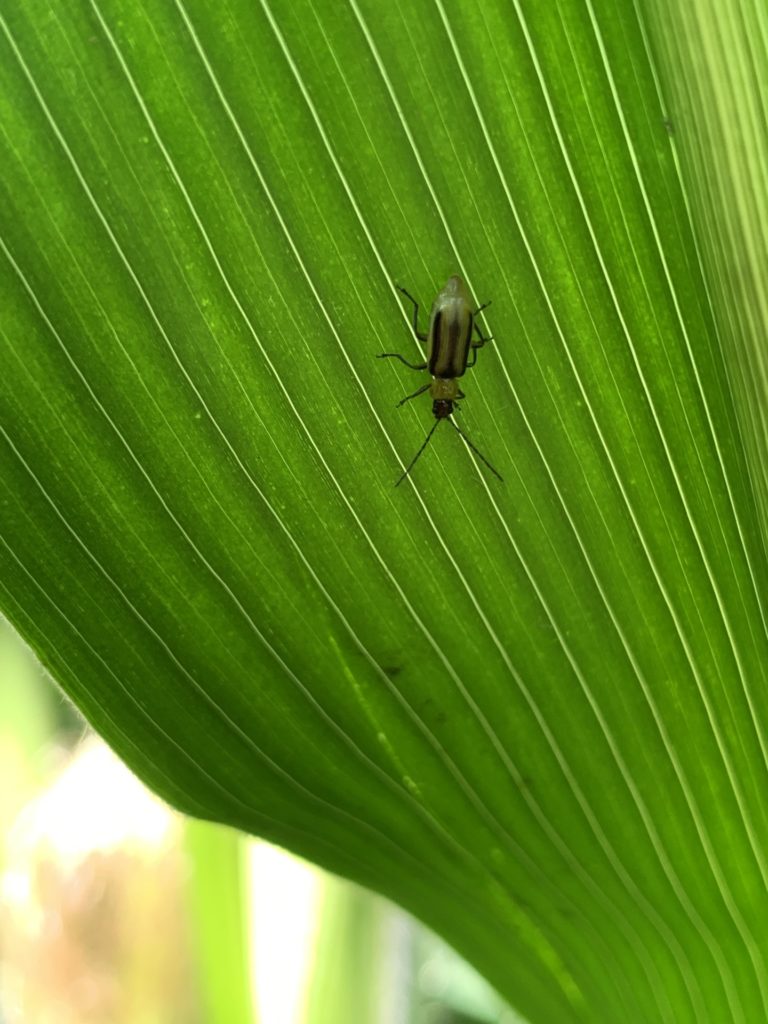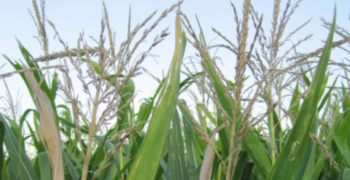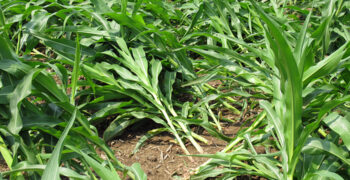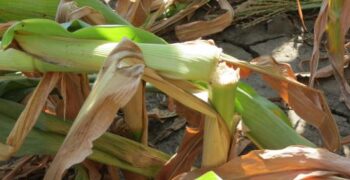From Champion Seed Agronomist Brandon Hulme
In the last few growing seasons, Corn Rootworm (CRW) populations have exploded.
Many corn-on-corn fields throughout the Midwest have seen extensive root feeding and yield damage due to this pest. So far, 2022 looks to be slightly improved from the last couple of years but not by much. June rainfall has been considerably higher in 2022 than 2020 or 2021, which can be detrimental to CRW larvae survival. But late June and early July winds have pushed some corn over and after performing root digs, we have found larvae crawling around the root balls. Currently, corn is mostly all tasseled and pollination is well underway. This means we are out and about performing CRW trapping to try and follow this year’s population of CRW beetles. Although it is early to make a final claim on the population, early indications are that larvae survival was high and most corn-on-corn fields we have been in this year have a significant amount of adult CRW beetles in them.
Scout your fields and use yellow sticky traps to track your own CRW populations to decide which management practices are best for your acres. CRW beetles (adults) are flying around in fields throughout July and August. They can feed on fresh corn silks reducing kernel set on the ear, but that isn’t the worst thing they’ll do to a corn crop.
The adult beetles will also be reproducing during the hot summer months and laying eggs in the soil that will severely damage the following year’s crop if the appropriate management practices are not followed.
CRW eggs overwinter and when soil temperatures warm up enough in the spring, the tiny CRW larvae will hatch. Typically, around 700 – 750 accumulated GDUs, in late May to early June, CRW larvae will hatch and begin looking for food. A good rule of thumb is when you start to see lightning bugs, the CRW is beginning to hatch as the two insects follow a similar progression and GDU requirement. When the larvae hatch, they will look for corn roots under the soil and begin feeding. Large populations of larvae under the soil surface can decimate the root structure of corn plants in a rather quick fashion, putting the corn plants at risk for root lodging, increased drought stress, and overall yield reduction with lack of water and nutrient uptake. When CRW are in the larvae stage they are susceptible to drowning if heavy rains saturate the soil. After a heavy rain when earthworms make their way to the soil surface and cover the sidewalks in search of oxygen, the tiny corn rootworm larvae are unable to do so and will drown.
This is the main factor for why CRW populations move in cycles, in wet years when soils are saturated, we see low populations. However, in back-to-back-to-back years of dry Junes like we’ve experienced the last few growing seasons, larvae populations are not reduced and the number of beetles that survive to reproduce explodes.
Planter-applied insecticides have been used for years and can be a good way of managing these insects. The downfall to in-furrow insecticide is keeping the chemical near the seed long enough until June when the larvae can encounter it and die. In an average to above-average rainfall year, this becomes a big challenge and oftentimes there isn’t a heavy enough concentration of the chemical to thoroughly control larvae.
Aerial applications of insecticide at tassel are also an effective way to kill CRW beetles but once the beetles are emerged and flying around the root, damage has already been done. At tassel, scout corn-on-corn fields for the presence of CRW beetles and consider making an application with an insecticide to control the beetles before they can lay eggs in the soil. Using sticky traps to monitor the beetle counts can give you a better idea of when to make this application so that the pesticide is not sprayed too early before all the beetles have emerged from the soil and not too late after the beetles have already laid eggs.
Our next option that has been quite successful is to use a Corn-Rootworm-traited hybrid like a SmartStax® or Duracade® Viptera product. These dual mode-of-action traits can be very effective against controlling rootworm feeding, but in recent years we have seen some level of resistance to the trait in fields that have been corn on corn with the same trait for several years in a row. Similar to rotating modes of action in an herbicide program, it is important to rotate modes of action when controlling CRW, too.
For the 2023 planting season, Champion Seed will be introducing a limited number of products that have the SmartStax® Pro trait. This new-to-market trait adds a third and unique mode of action to the SmartStax trait that will not only give a higher level of control against CRW larvae but will also help control populations of resistant Corn Rootworm.



